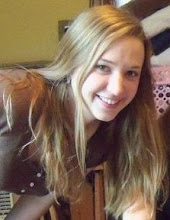I just finished my first almost-full week in the lab. I feel like I learned and absorbed so much in a short period of time.
On Tuesday, I was given my lab notebook :-) It's rapidly filling up with notes on the protocols for cell culture, the experiments I'll be working on, calculations, and notes from experiments. Craig then taught me how to make HBSS (Hank's Buffered Salt Solution), which felt like it had a million components, and RPMI (media that I'll use for my cells). I'll be using these two a lot during the summer, so it was important to learn how to make them. I am continually amazed at how much attention is really paid to sterile technique. We are constantly spraying our gloved hands with ethanol, and before putting anything in the hood, spray the entire thing with more alcohol, spray the whole bottle, the bottle's lid and then put that in a flame (holding the item that has flames of burning alcohol scares me every time). If there's even a possibility that you contaminated something or touched the tip of your pipette to something else, even if you had sterilized that something else, you throw it out. I am also surprised by the amount of plastic and glassware that we go through and throw out to ensure that everything is sterile.Anyways, on Tuesday, I also got my own line of Beta TC3 cells to take care of and eventually do experiments on. I brought them up from the freezer, then added media, and incubated them. I'm supposed to feed them about twice a week, and split them when they get too confluent (crowded).
On Wednesday I watched Craig do experiments on the beta TC3 cells, and learned how the process works. The microscope is so complicated! I had to take notes in my lab notebook on how to turn it on...and there are 10 steps to turning it on. I'm terrified I'm going to make a mistake and harm this microscope, which is worth many thousands of dollars. By the end of Wednesday, I had learned how to rinse the cells, load them with Fura-2, a fluorescent dye that binds to calcium in the cell, rinse the cells again, put them on the microscope, focus it, and take 3 pictures!
On Thursday, I watched Craig do two more experiements, then I got to do 3 of my own! Basically, that consists of rinsing, loading, and rinsing the cells, finding a group, then taking images of them at both 340 nm and 380 nm with the microscope/computer at specific timepoints after adding high-glucose solution or ionomycin, for example, to see how the calcium in the cell reacts to these. Calcium in the cell has a big influence on release of insulin, which is obviously important in the study of diabetes. During my first experiment, I was kind of stressed out, because the timing has to be coordinated, you can't see very much (the room has to be dark, otherwise it'll mess with the Fura-2 dye), and the microscope/computer program only works with Windows 95....which is very different, and only allowes you to have a certain number of images open at a certain time...So I had to take 32 images, and try to find a few seconds in between shots to save one and open another. By the end of the day, I was feeling much more relaxed, and it definitely helped a lot to have Craig in the room, talking me through exactly what I should be doing. He's really helpful and very patient.
On Friday, I fed my cells, then spent most of the day analyzing the data we had gotten fromthe previous two days using Excel, and another computer program that had been designed specifically for Dr. Lynch by a computer science group at the U of A.
Saturday, May 30, 2009
Subscribe to:
Post Comments (Atom)

Wow this is sooo interesting Val! I'm so envious; this sounds like the such a valuable experience. Keep writing and posting blogs!! I like 'em!
ReplyDelete<3